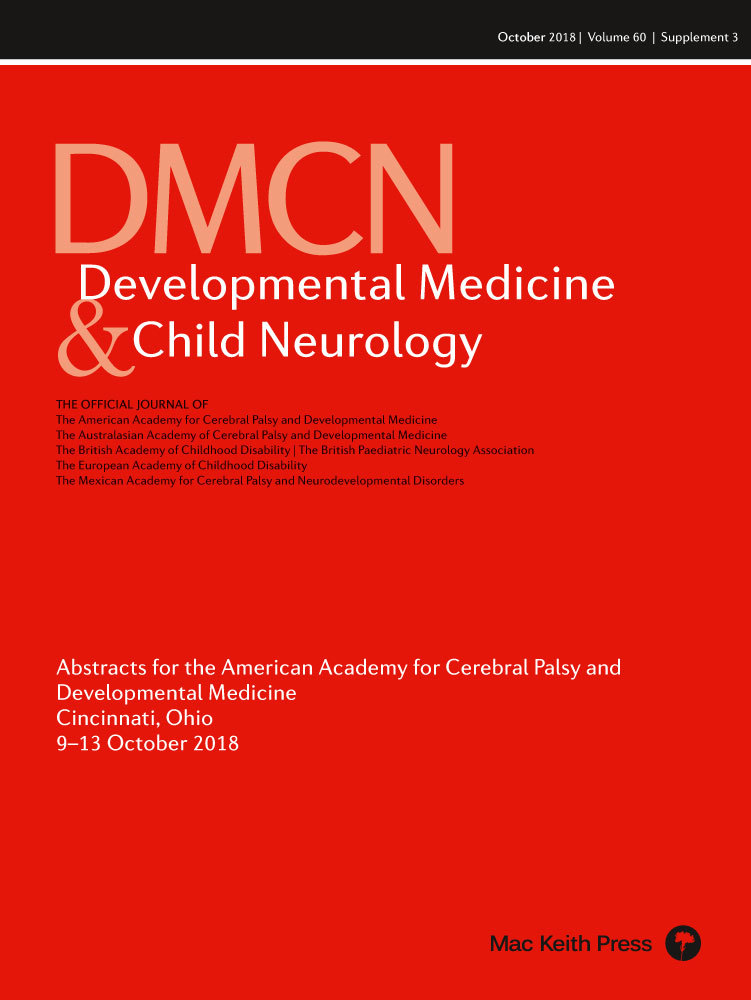Depression, anxiety and stress among caregivers of adolescents with cerebral palsy in rural Bangladesh
B10
R Power1, M Muhit2, E Heanoy3, T Karim4, N Badawi5, R Akhter6, G Khandaker7
1Discipline of Child and Adolescent Health, Sydney Medical School, University of Sydney, NSW, Australia; Asian Institute of Disability and Development AIDD, University of South Asia, Dhaka, Bangladesh; 2Asian Institute of Disability and Development AIDD, University of South Asia, Dhaka, Bangladesh; CSF Global, Dhaka, Bangladesh; 3Asian Institute of Disability and Development AIDD, University of South Asia, Dhaka, Bangladesh; 4Asian Institute of Disability and Development AIDD, University of South Asia, Dhaka, Bangladesh; CSF Global, Dhaka, Bangladesh; 5Cerebral Palsy Alliance, The University of Sydney, Children's Hospital at Westmead; 6Faculty of Dentistry, the University of Sydney, NSW, Australia; 7Asian Institute of Disability and Development AIDD, University of South Asia, Dhaka, Bangladesh; CSF Global, Dhaka, Bangladesh; Central Queensland Public Health Unit, Central Queensland Hospital and Health Service, Rockhampton, QLD, Australia
Background and Objective(s): Caregivers of adolescents with cerebral palsy (CP) commonly report symptoms of depression, anxiety and stress, although little is known about wellbeing in low resource settings whereby disability is viewed as non-normative and impairments are exacerbated by poverty. The purpose of this study was to determine the incidence, severity and predictors of depression, anxiety and stress among caregivers of adolescents with CP in rural Bangladesh to inform resource allocation and service design and implementation.
Study Design: Case-control study.
Study Participants & Setting: 154 caregivers of adolescents with CP (i.e. parent, grandparent, other relative or close adult friend who provided the majority of care and support to the adolescent) were matched by child age (10 to 18y) and sex to 173 caregivers of adolescents without disability. Participants were identified through the Bangladesh Cerebral Palsy Register; participation rate 80.2%. Study was conducted in the Shahjadpur sub-district in the northern part of Bangladesh.
Materials/Methods: Symptoms of depression, anxiety and stress were assessed using the Bengali DASS-21 questionnaire. Bivariate analysis and hierarchical multivariable regression related DASS-21 outcomes to sociodemographic characteristics.
Results: Majority of caregivers of adolescents with CP reported symptoms of depression (76.6%), anxiety (75.3%) and stress (79.9%). Caregivers of adolescents with CP were between 1.7 (95% CI 1.0 to 2.7) and 2.3 (95% CI 1.4 to 3.8) times less likely to report normal range depression, anxiety and stress than controls and 0.4 (95% CI 0.2 to 0.7) times more likely to report severe depression and 0.5 (95% CI 0.3 to 0.9) times more likely to report moderate or severe stress (p<0.050). Older caregivers, those with lower levels of education, whose child reported mental health problems, and who lived in higher persons per room households were more likely to report depression, anxiety and stress (r=0.162 to 0.417, p<0.050). Caregiver age (0.1, 95% CI 0.0 to 0.2) and adolescent mental health (0.3, 95% CI 0.2 to 0.4) were significant predictors of caregiver depression, anxiety and stress; rate of household crowding predicted depression (0.6, 95% CI 0.0 to 1.2) and anxiety (0.7, 95% CI 0.2 to 1.3); and hearing impairment predicted anxiety (2.2, 95% CI 0.0 to 4.4) (p<0.050).
Conclusions/Significance: Caregivers of adolescents with CP in rural Bangladesh are at high risk of depression, anxiety and stress and are more likely to report severe symptoms. Intervention planning and delivery is recommended to specifically address the psychological needs of caregivers of adolescents with CP in this region.




